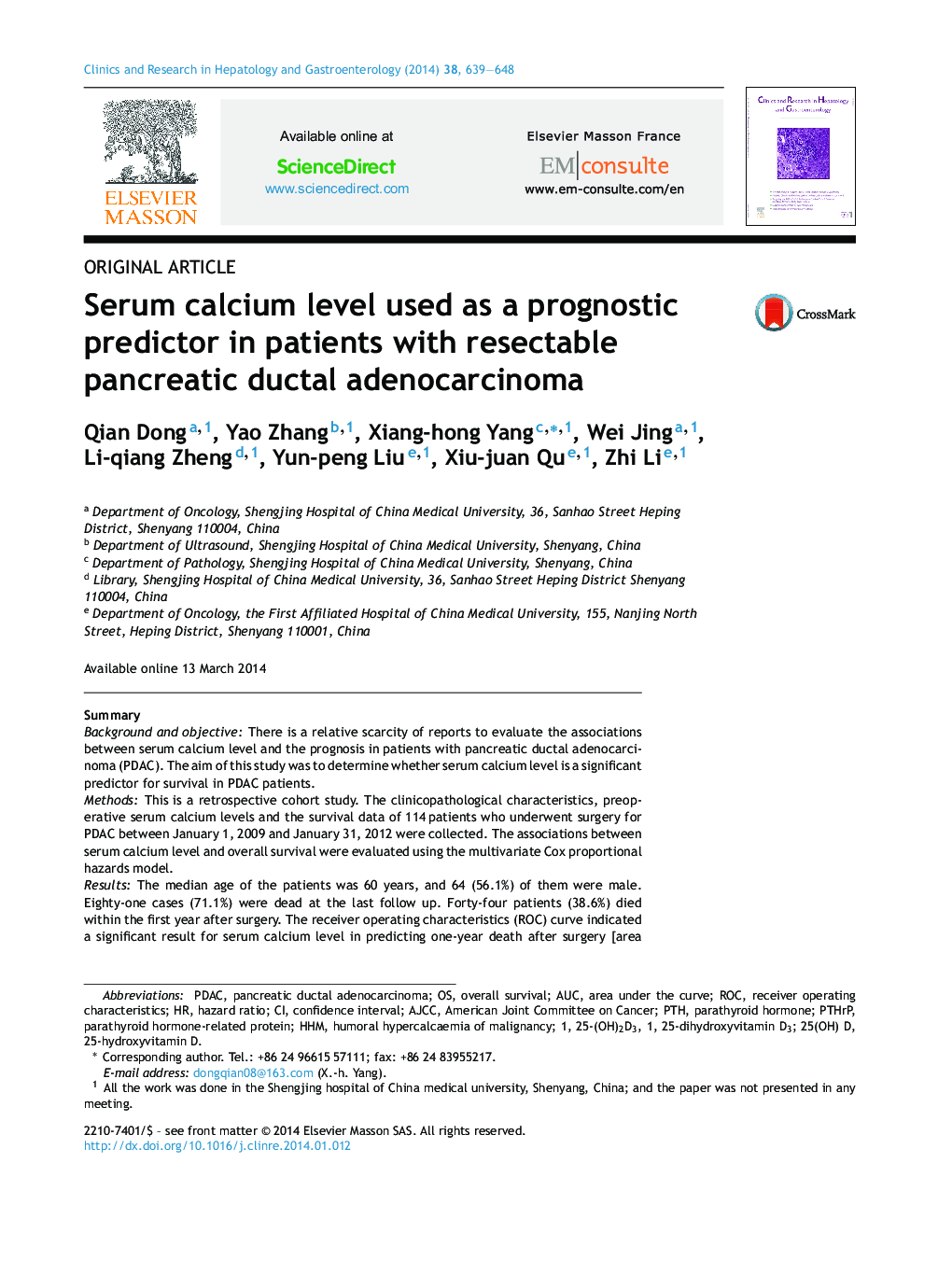| Article ID | Journal | Published Year | Pages | File Type |
|---|---|---|---|---|
| 3286449 | Clinics and Research in Hepatology and Gastroenterology | 2014 | 10 Pages |
SummaryBackground and objectiveThere is a relative scarcity of reports to evaluate the associations between serum calcium level and the prognosis in patients with pancreatic ductal adenocarcinoma (PDAC). The aim of this study was to determine whether serum calcium level is a significant predictor for survival in PDAC patients.MethodsThis is a retrospective cohort study. The clinicopathological characteristics, preoperative serum calcium levels and the survival data of 114 patients who underwent surgery for PDAC between January 1, 2009 and January 31, 2012 were collected. The associations between serum calcium level and overall survival were evaluated using the multivariate Cox proportional hazards model.ResultsThe median age of the patients was 60 years, and 64 (56.1%) of them were male. Eighty-one cases (71.1%) were dead at the last follow up. Forty-four patients (38.6%) died within the first year after surgery. The receiver operating characteristics (ROC) curve indicated a significant result for serum calcium level in predicting one-year death after surgery [area under the curve (AUC), 0.629; 95% CI 0.527–0.730, P = 0.021]. In multivariate analysis, higher serum calcium levels [hazard ratio (HR), 1.922; P = 0.036], diabetes (HR, 1.820; P = 0.017), histologically poorly-differentiated tumor (HR, 3.342; P = 0.001) and vessel invasion (HR, 1.729; P = 0.023) were independent predictors of poor prognosis. Similarly, the albumin-adjusted albumin level was also an independent prognostic factor.ConclusionsThe higher serum calcium level is associated with poor prognosis in patients with resectable PDAC and the level of serum calcium can predict death within one year after surgery.
